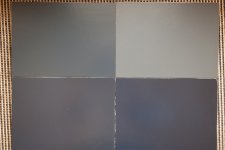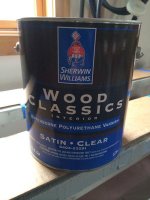- Joined
- Nov 14, 2013
- Messages
- 3,575
I was answering another post and it got me to thinking that I almost never see anyone post about using Polyurethane as a finish? It is a long-time favorite of mine, as it doesn't raise the grain or yellow/discolor.
Being a hobby shop, I usually use a rattle can of Satin Polyurethane Spray. I prefer Sherwin-Williams stuff, but have also used Rustoleum and Krylon. I have also sprayed Poly with my HVLP gun, but it's usually more trouble to set it up and clean it than it is worth with the small projects I typically do.
So does anybody else Satin Polyurethane? If not, please educate me on why not?
Being a hobby shop, I usually use a rattle can of Satin Polyurethane Spray. I prefer Sherwin-Williams stuff, but have also used Rustoleum and Krylon. I have also sprayed Poly with my HVLP gun, but it's usually more trouble to set it up and clean it than it is worth with the small projects I typically do.
So does anybody else Satin Polyurethane? If not, please educate me on why not?


